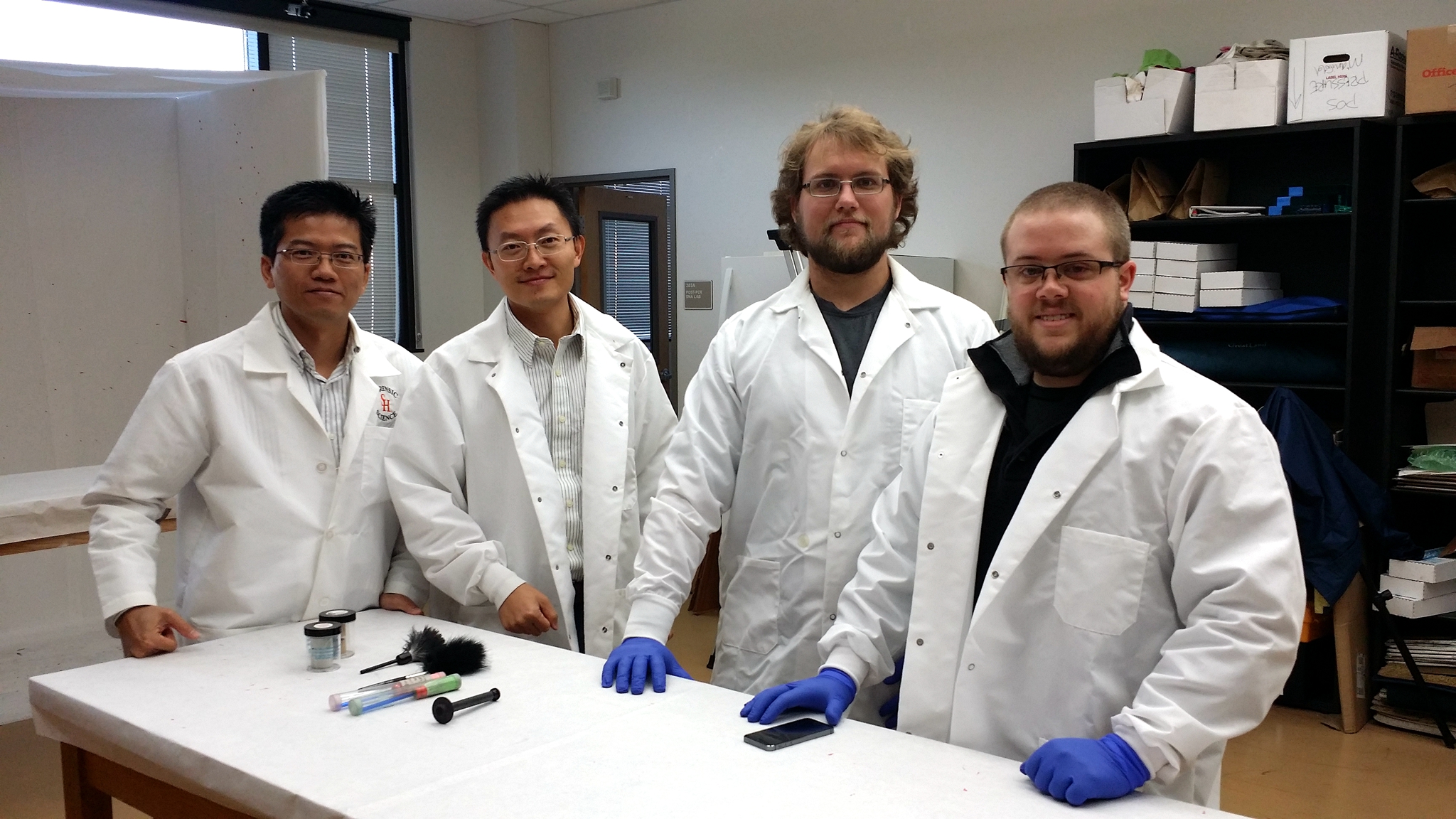Lei Chen & Chi-Chung Jorn Yu
Faculty Mentors
Lei Chen, Associate Professor,
Department of Computer Science
Chi-Chung Jorn Yu, Associate Professor,
Department of Forensic Science
Student Team Members: Robert McDown & Joshua Sablatura
Student funding for this project was provided by the College of Sciences Dean’s Office

Student Reflections
Robert McDown Joshua Sablatura
Can Latest Biometric Technologies Be Trusted?
A Pilot Study of the Reliability and Tamper-Resistance of Touch ID and Retina Scanner
FACULTY REPORT
- Meetings and collaboration: In the summer of 2014, the team had multiple face-to-face meetings, especially at the initial and ending stages of the project, in both offices and Forensic labs at the Department of Forensic Science and the Department of Computer Science. In addition to these team meetings, faculty mentors had multiple face-to-face and phone call meetings with each other discussing the project direction and scholarly work preparation and submission. The two students also worked closely with each other under the guidance of faculty mentors.
- Testing iris scanner: the two students have tested the iris scanner provided by the Department of Computer Science. Our testing includes the enrollment and authentication processes, where both students first took hundreds of iris scans in various situations, including with and without glasses, with different light settings, with and without contact lenses, and with intentional eye and eye lid distortions, and then tested the system’s authentication using the same eye, the other eye of the same person, and eyes of other persons. The goals of this testing is to see if an unauthorized user/eye can get authenticated as authorized user/eye and at what rate, as well as how likely an authenticated user/eye can get successfully authenticated in one single scan.
- Testing Touch ID on iPhone 5S: the two students have conducted very thorough testing on Apple iPhone 5S’s Touch ID (provided by the Department of Computer Science). The two students first enrolled all their finger prints with Touch ID, and then tested the log in with many different scenarios, e.g. with any of the enrolled fingers, with non-enrolled fingers, with enrolled fingers when fingerprints are captured unclearly, with fake fingerprints, and with fake fingerprint molds.
- Other research activities: throughout the entire research and testing, the team had gone through a long list of references and online resources to seek for hints and ideas. The team also received consultation from the Director of Center of Excellence in Digital Forensics Mr. Andrew Bennett regarding making fingerprint mold and testing fingerprint scanners.
Findings and Results: the valuable findings and results of this project are in several aspects and ways as described below.
- Iris scanning: based on our limited resources and testing, the team found iris scanner, even one of the cheapest (around
$350) in the market, is quite reliable as far as false reject rate (FRR) and false acceptance rate (FAR) are concerned. In other words, it is extremely unlikely to let an unauthorized user/eye to get into the system as authenticated user. Actually in our testing FAR was zero. If the iris of eye is well captured, even if captured through transparent or translucent objects, the FRR is quite low.
- Touch ID: based on our testing, Touch ID is not a very secure fingerprint scanner and scanning technology as many people would assume. While the official documentation of Touch ID from Apple was very limited (we believe this is Apple’s intention), we were able to successfully produce fake fingerprints (molds) based on scanned fingerprint images and fool the Touch ID to get successful authentication.
- Field Scholarly and outcomes: We believe our findings on Touch ID are a milestone and of great potential to help advance forensic investigations in the real world. We have submitted an abstract of our findings to the discipline leading venue, the American Academy of Forensic Sciences (AAFS) 67th Annual Scientific Meeting, which will be held in February 2015 in Orlando, Florida. If accepted, the team will present our findings at the conference as poster and/or presentation. The team will also extend the work into a journal paper and submit it to a major journal in (Digital) Forensic Science area.
Possible (digital) forensic tools and methods can be developed to be released.
- External funding opportunities: both faculty mentors consider this project a successful pilot study that can very possibly be extended to attract external funding. We are mainly targeting the funding programs by the National Institute of Justice (NIJ) who greatly supports and promotes research and development of new methods, technologies, and tools that can assistant law enforcement in real world investigation. The faculty mentors plan to work on an NIJ grant proposal in early 2015 and submit it by April of the same year.
